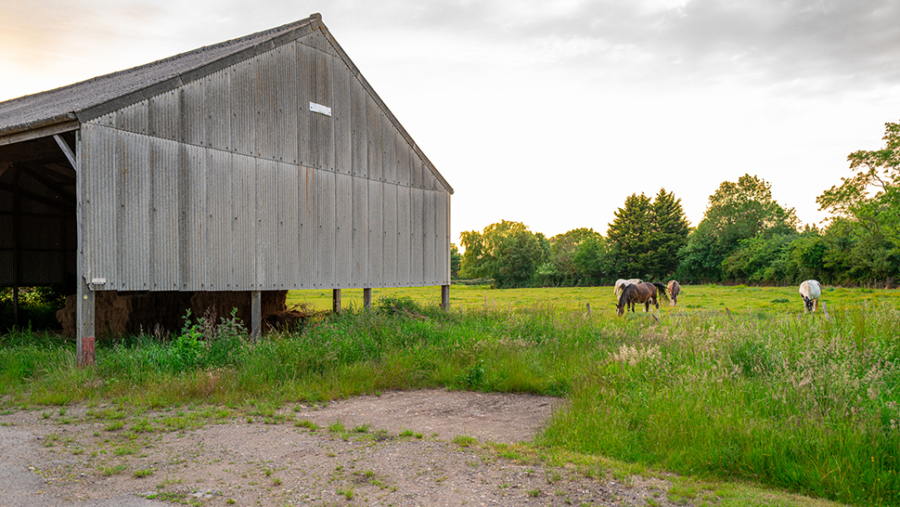

Most farms have some asbestos somewhere. There may be simply a shed with an asbestos cement roof and some asbestos rainwater gutters, or the asbestos may be more extensive.
A high proportion of farm buildings were constructed when asbestos was an accepted common building material, and others have been repaired or altered with asbestos containing materials. Asbestos containing materials may have been re-used for patch repairs or construction of other structures instead of being disposed of. Asbestos was also sometimes buried within fields.
Farm owners and tenants have a duty under the Control of Asbestos Regulations 2012 to properly assess whether asbestos is present and what its condition is. This would normally involve having a survey done by a qualified asbestos surveyor. An asbestos register will be prepared with a written management plan which should be followed. Some asbestos may need to be removed by licensed contractors, whilst other asbestos in good condition may be able to be managed in situ. Regular inspections will be required to keep the plan up to date, and appropriate steps taken to advise workers of the presence of asbestos, including farm employees.
If anyone works on a building containing asbestos, you must inform them of the presence and location of the asbestos. This may be where a contractor comes to carry out simple repair or maintenance works, or where they are carrying out a more significant refurbishment. Work involving asbestos insulation, asbestos board or sprayed coatings must be done by specialist licensed contractors.
It is fair to say that when compared with other types of commercial property, compliance with the asbestos regulations has tended to be lower on farms. There could be several reasons for this:
- Farms often remain in the family for generations and do not tend to change hands as frequently as other commercial properties. This means that formal due diligence and requests for copies of surveys by a third party do not occur as frequently, meaning any lack of compliance is not highlighted.
- Given that the property has been in the family for generations a farmer may feel that they are sufficiently familiar with the property and remember the materials used in construction of its buildings and any repairs. They may feel confident that there is no asbestos, or that the asbestos they have lived with has not given rise to any issues in the past. Sometimes this confidence may be misplaced.
- In practice removal of asbestos has sometimes been dealt with personally by farmers rather than calling in specialists, and a relaxed approach to the issue has persisted.
If you sell the farm, the solicitors acting for the buyer are likely to raise standard pre-contract enquiries. These usually include an enquiry about whether there is any asbestos currently on the farm, or whether it has been removed from the farm in the past, and a request for a copy of the most recent asbestos survey or assessment, and written plan for managing the asbestos.
Likewise if you let or mortgage the farm, the solicitors acting for the tenant or bank may also raise similar enquiries.
If there has been no survey or management plan prepared, this can result in a delay to the transaction whilst these are carried out if required, and then there may be further negotiations over any required action to be taken in respect of any asbestos revealed.
There is a suggestion that if someone sells a property without having carried out an asbestos survey when they should, the money they save as a result of not carrying out the survey becomes criminal property under the Proceeds of Crime Act 2002.
Action taken now may help to avoid non-compliance with the regulations, claims by people exposed to asbestos, and potential delays to future property transactions.










